Abstract
The substances which block sympathetic postganglionic transmission, xylocholine, bretylium and guanethidine, also block neuromuscular and sympathetic ganglionic transmission. To see if these last properties were related to the sympathetic blocking property, phenyltrimethylammonium, which blocks the neuromuscular junction (Riker, 1953), was used. It blocked the inhibition of the rabbit ileum produced by stimulating the periarterial nerves in the mesentery, though with higher concentrations the effect of stimulation was initially increased. The action was not modified by the presence of hyoscine. The blocking action was exerted on the response to stimulation of the highest frequency first, and on the response to stimulation of the lowest frequency last. This relation of block to stimulus frequency is similar to that at the neuromuscular junction when tubocurarine is used. Nine compounds have now been shown to block responses to sympathetic postganglionic stimulation, and seven of these are onium compounds. They are, however, mon-onium compounds, and not bis-onium compounds like hexamethonium and decamethonium, so that they can probably enter the postganglionic fibre, which bis-onium compounds (having a charged group at each end of the molecule) may not be able to do. Since these mon-onium compounds have some blocking action at neuromuscular junctions and at sympathetic ganglia, their block of postganglionic transmission may be essentially similar to that by hexamethonium at ganglia and to that by decamethonium at neuromuscular junctions. It is known that acetylcholine releases noradrenaline from sympathetic postganglionic terminations, and xylocholine and bretylium block this release in the vessels of the rabbit ear and in the rabbit isolated atria.
Full text
PDF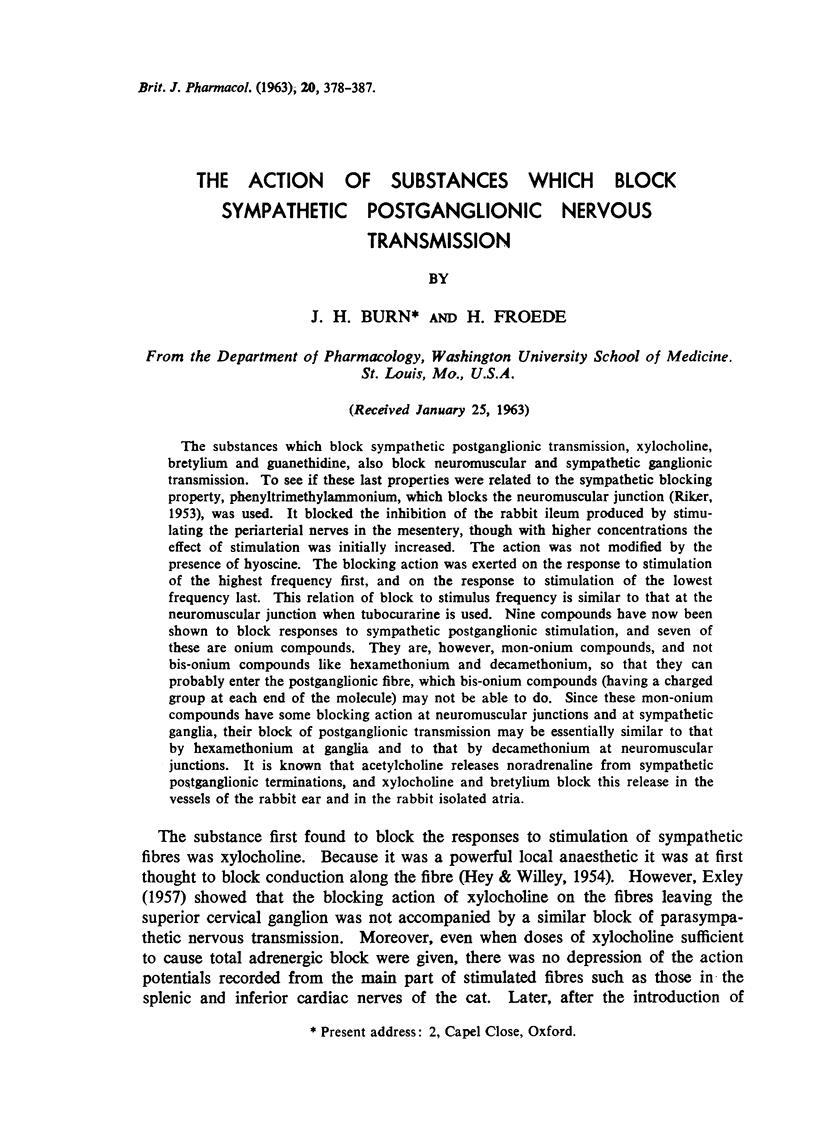
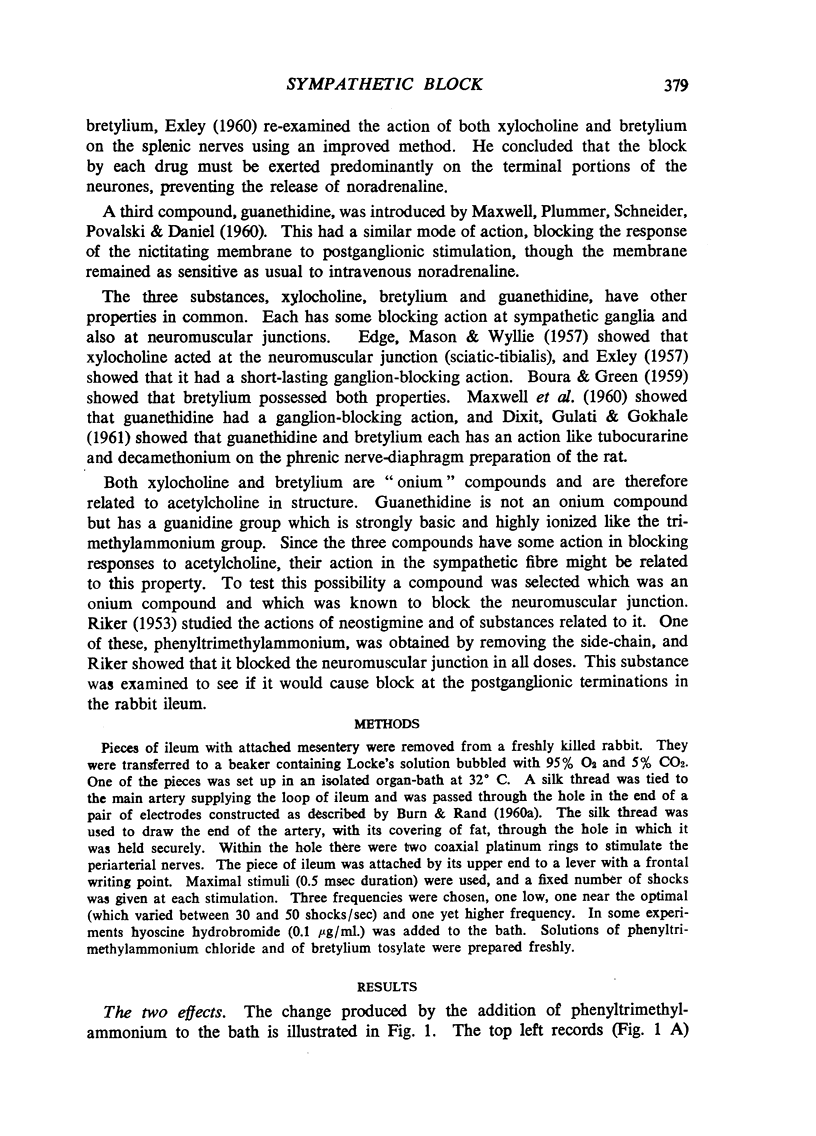
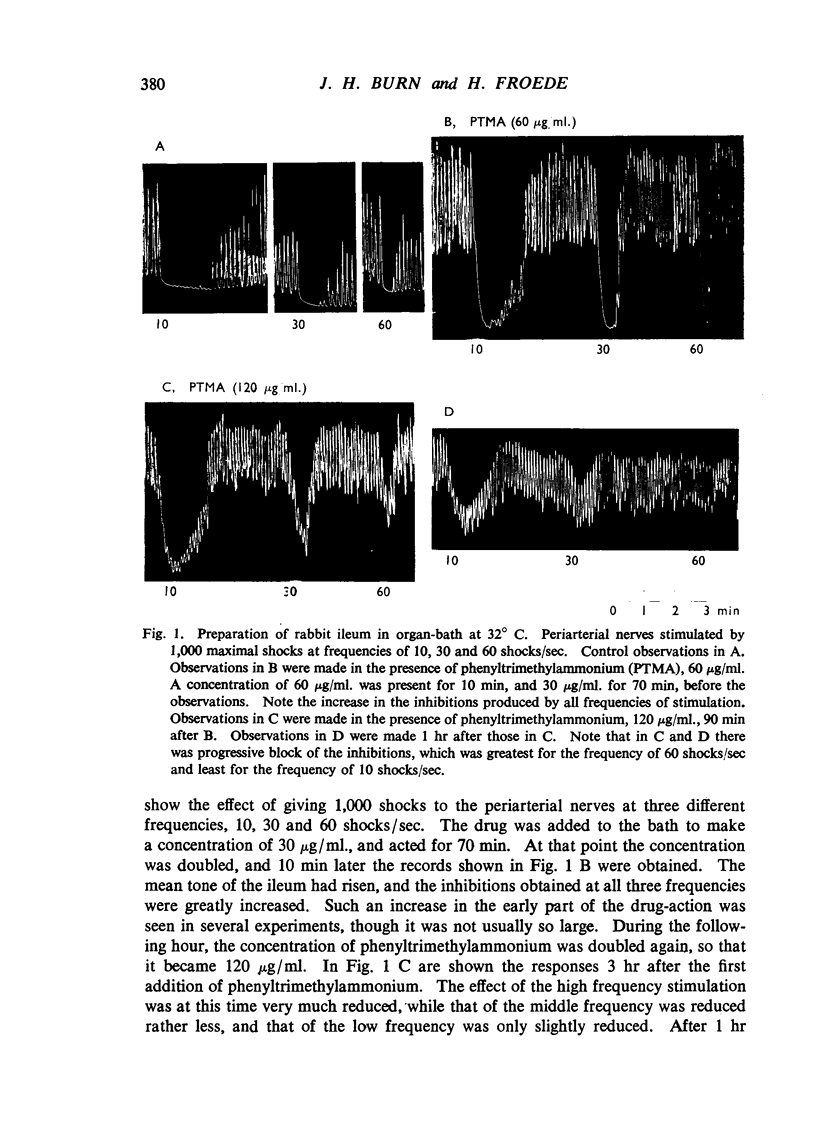
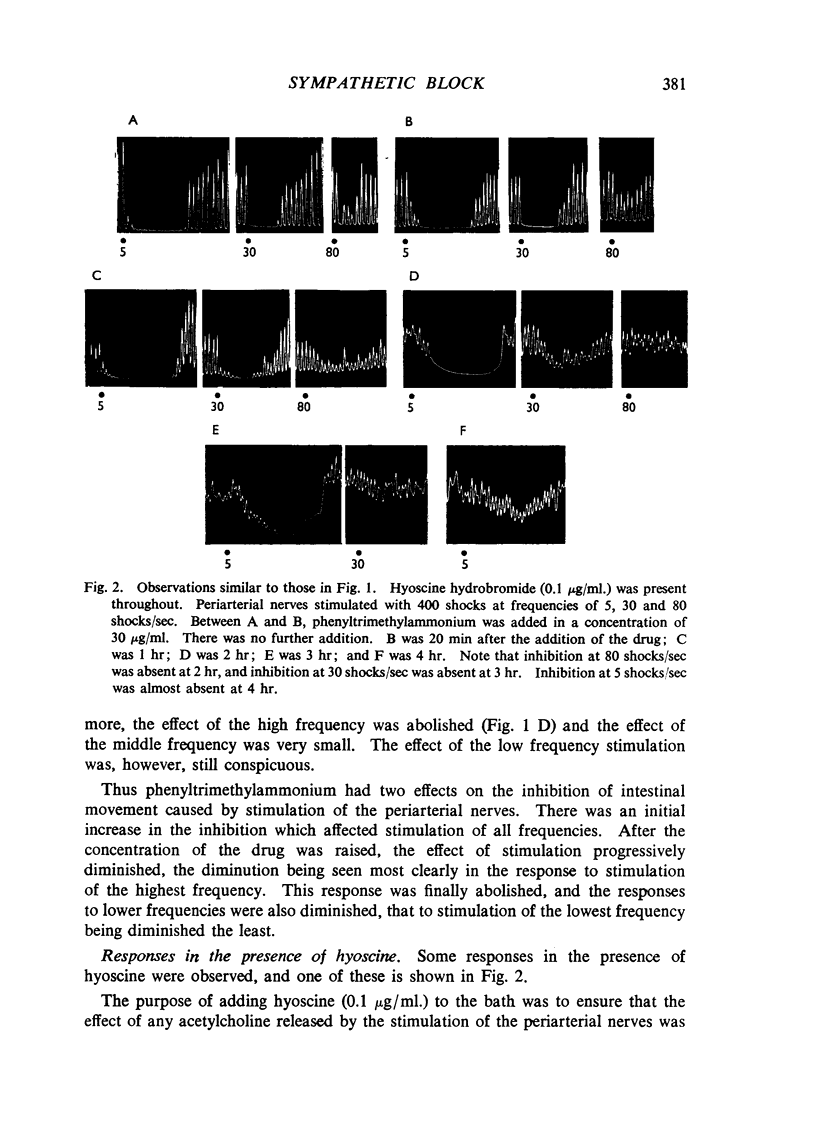
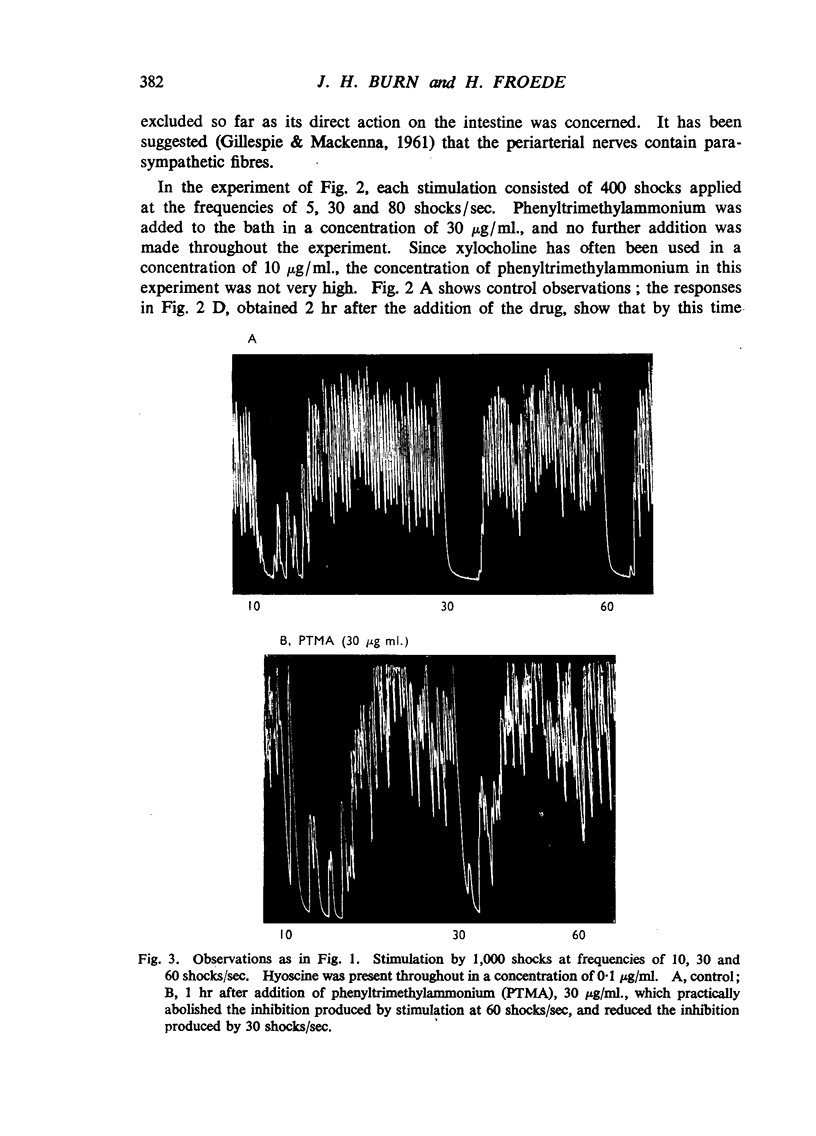
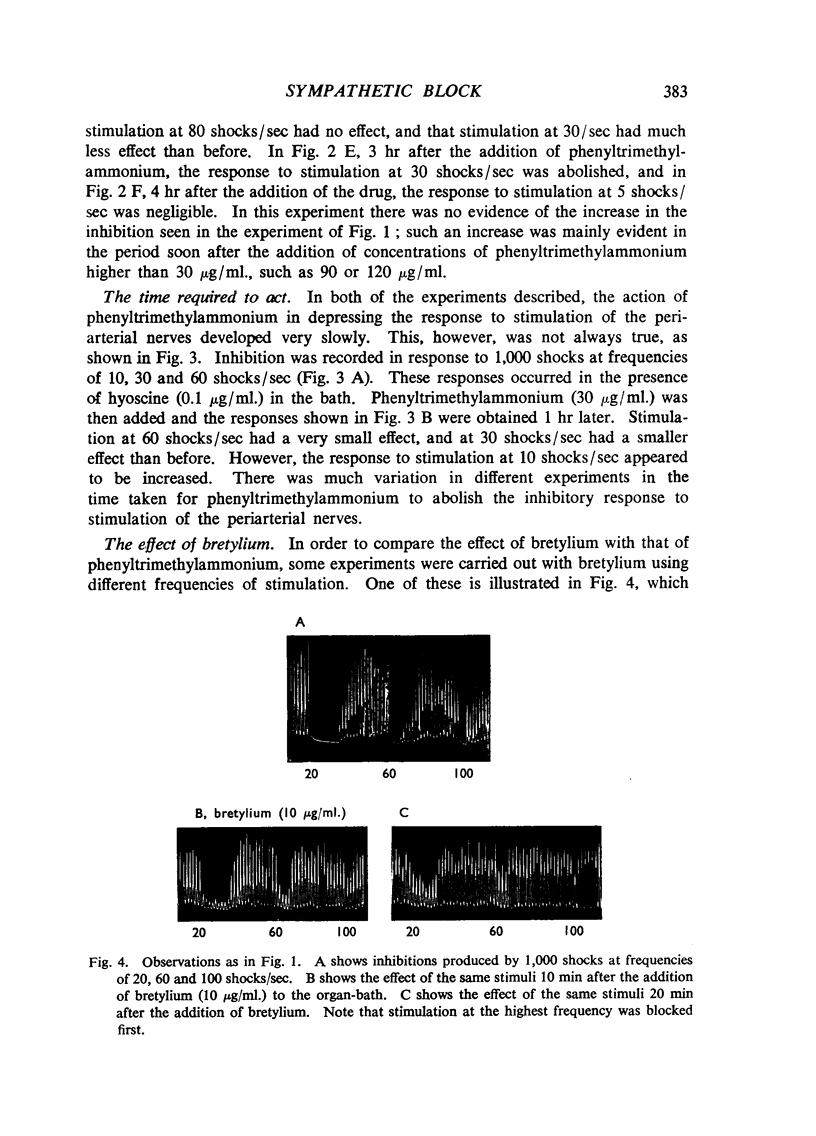
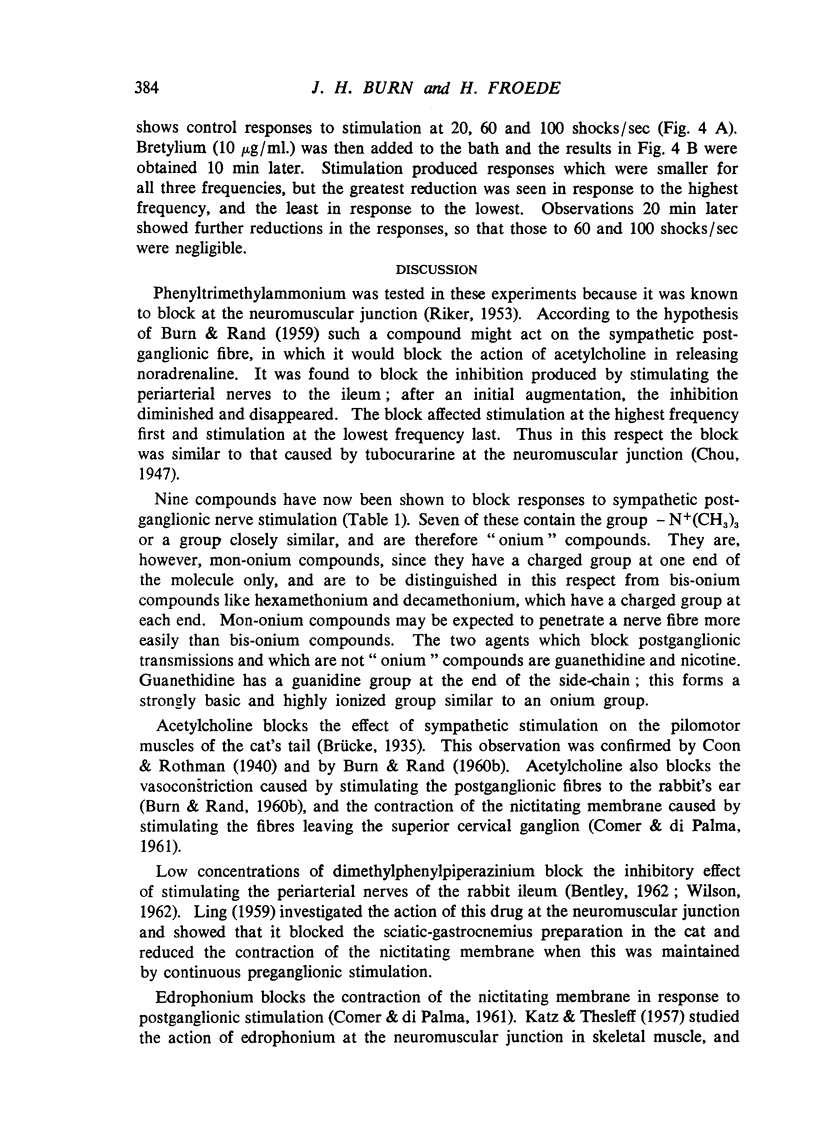
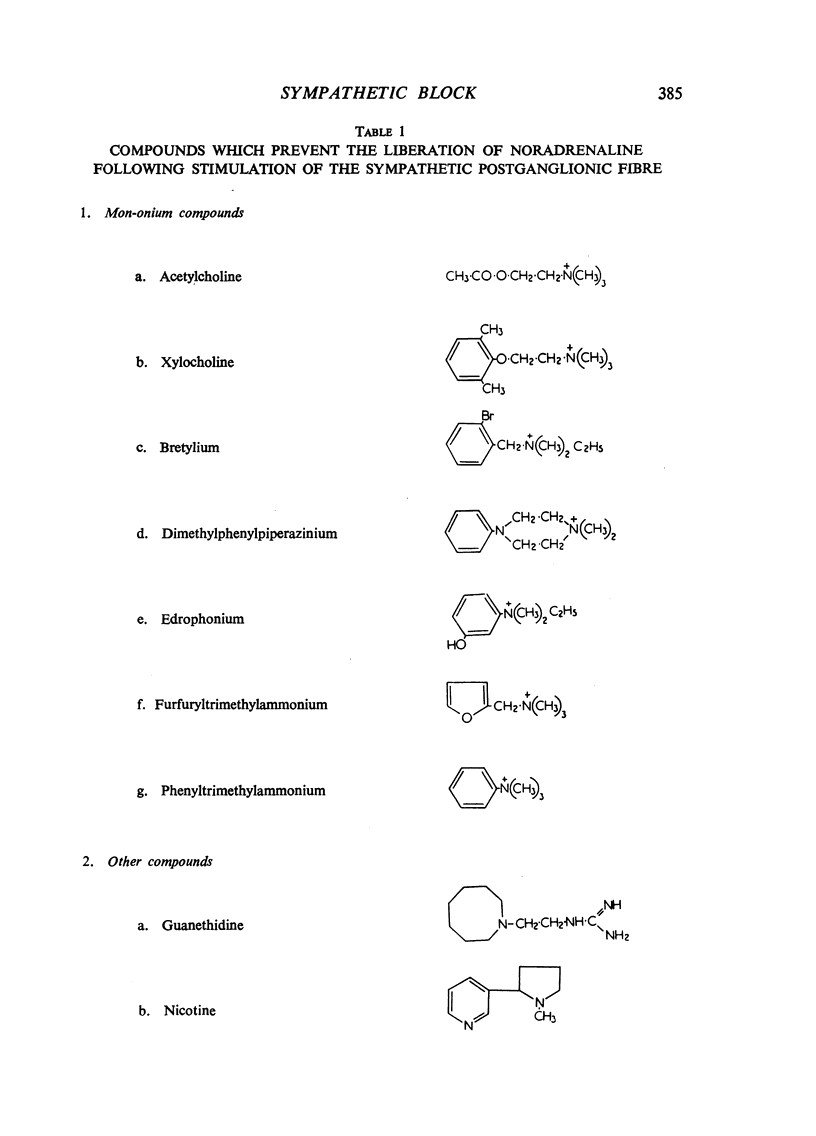
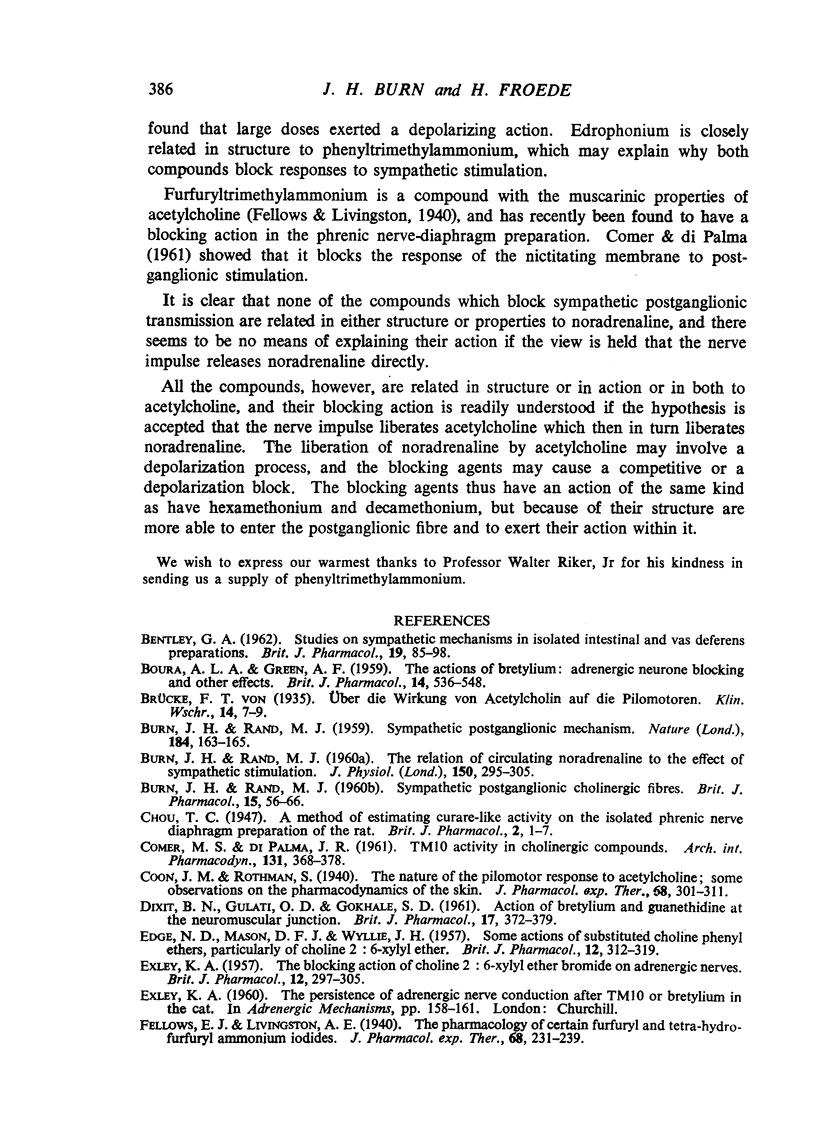
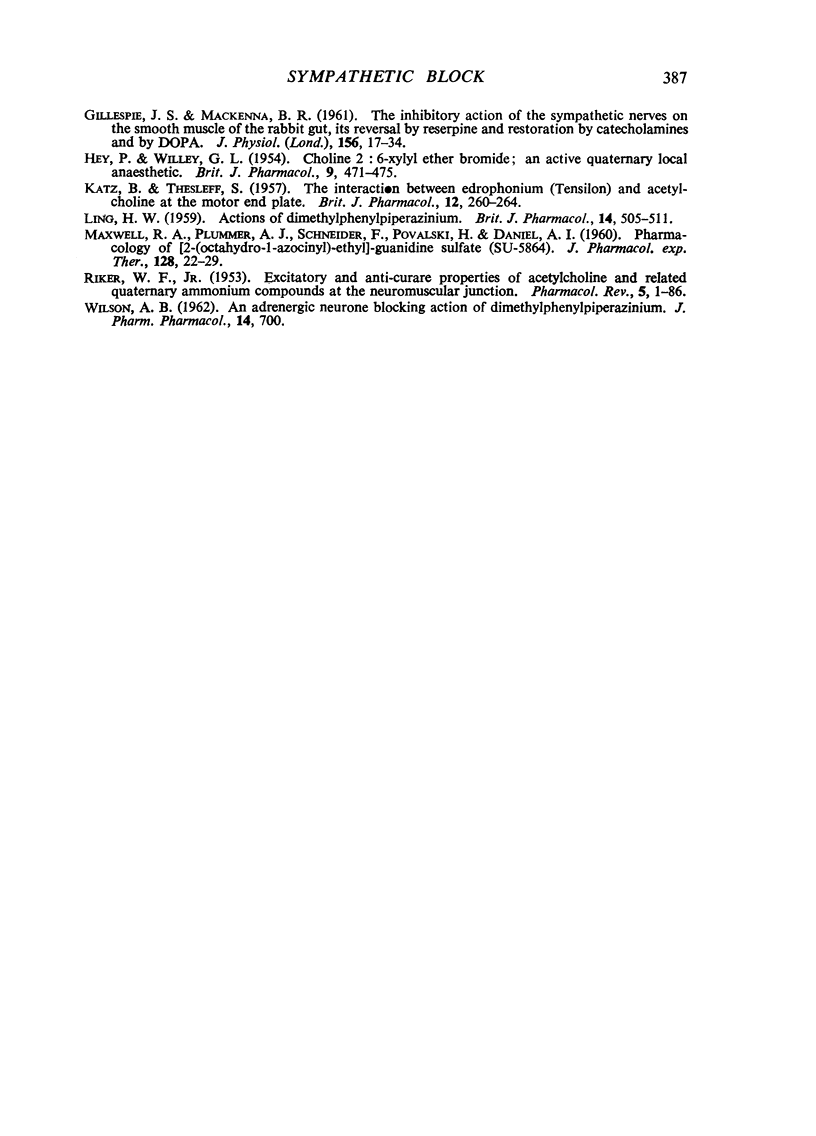
Selected References
These references are in PubMed. This may not be the complete list of references from this article.
- BENTLEY G. A. Studies on sympathetic mechanisms in isolated intestinal and vas deferens preparations. Br J Pharmacol Chemother. 1962 Aug;19:85–98. doi: 10.1111/j.1476-5381.1962.tb01429.x. [DOI] [PMC free article] [PubMed] [Google Scholar]
- BOURA A. L., GREEN A. F. The actions of bretylium: adrenergic neurone blocking and other effects. Br J Pharmacol Chemother. 1959 Dec;14:536–548. doi: 10.1111/j.1476-5381.1959.tb00961.x. [DOI] [PMC free article] [PubMed] [Google Scholar]
- BURN J. H., RAND M. J. The relation of circulating noradrenaline to the effect of sympathetic stimulation. J Physiol. 1960 Feb;150:295–305. doi: 10.1113/jphysiol.1960.sp006388. [DOI] [PMC free article] [PubMed] [Google Scholar]
- COMER M. S., DI PALMA J. R. TM 10 activity in cholinergic compounds. Arch Int Pharmacodyn Ther. 1961 May 1;131:368–378. [PubMed] [Google Scholar]
- DIXIT B. N., GULATI O. D., GOKHALE S. D. Action of bretylium and guanethidine at the neuromuscular junction. Br J Pharmacol Chemother. 1961 Dec;17:372–379. doi: 10.1111/j.1476-5381.1961.tb01123.x. [DOI] [PMC free article] [PubMed] [Google Scholar]
- EDGE N. D., MASON D. F., WYLLIE J. H. Some actions of substituted choline phenyl ethers, particularly of choline 2:6-xylyl ether. Br J Pharmacol Chemother. 1957 Sep;12(3):312–319. doi: 10.1111/j.1476-5381.1957.tb00140.x. [DOI] [PMC free article] [PubMed] [Google Scholar]
- EXLEY K. A. The blocking action of choline 2:6-xylyl ether bromide on adrenergic nerves. Br J Pharmacol Chemother. 1957 Sep;12(3):297–305. doi: 10.1111/j.1476-5381.1957.tb00138.x. [DOI] [PMC free article] [PubMed] [Google Scholar]
- GILLESPIE J. S., MACKENNA B. R. The inhibitory action of the sympathetic nerves on the smooth muscle of the rabbit gut, its reversal by reserpine and restoration by catechol amines and by DOPA. J Physiol. 1961 Apr;156:17–34. doi: 10.1113/jphysiol.1961.sp006655. [DOI] [PMC free article] [PubMed] [Google Scholar]
- HEY P., WILLEY G. L. Choline 2 : 6-xylyl ether bromide; an active quaternary local anaesthetic. Br J Pharmacol Chemother. 1954 Dec;9(4):471–475. doi: 10.1111/j.1476-5381.1954.tb00863.x. [DOI] [PMC free article] [PubMed] [Google Scholar]
- KATZ B., THESLEFF S. The interaction between edrophonium (tensilon) and acetylcholine at the motor end-plate. Br J Pharmacol Chemother. 1957 Jun;12(2):260–264. doi: 10.1111/j.1476-5381.1957.tb00131.x. [DOI] [PMC free article] [PubMed] [Google Scholar]
- LING H. W. Actions of dimethylphenylpiperazinium. Br J Pharmacol Chemother. 1959 Dec;14:505–511. doi: 10.1111/j.1476-5381.1959.tb00957.x. [DOI] [PMC free article] [PubMed] [Google Scholar]
- MAXWELL R. A., PLUMMER A. J., SCHNEIDER F., POVALSKI H., DANIEL A. I. Pharmacology of [2-(octahydro-1-azocinyl)-ethyl]-guanidine sulfate (Su-5864). J Pharmacol Exp Ther. 1960 Jan;128:22–29. [PubMed] [Google Scholar]
- RIKER W. F., Jr Exicitatory and anticurare properties of acetylcholine and related quaternary ammonium compounds at the neuromuscular junction. Pharmacol Rev. 1953 Mar;5(1):1–86. [PubMed] [Google Scholar]


